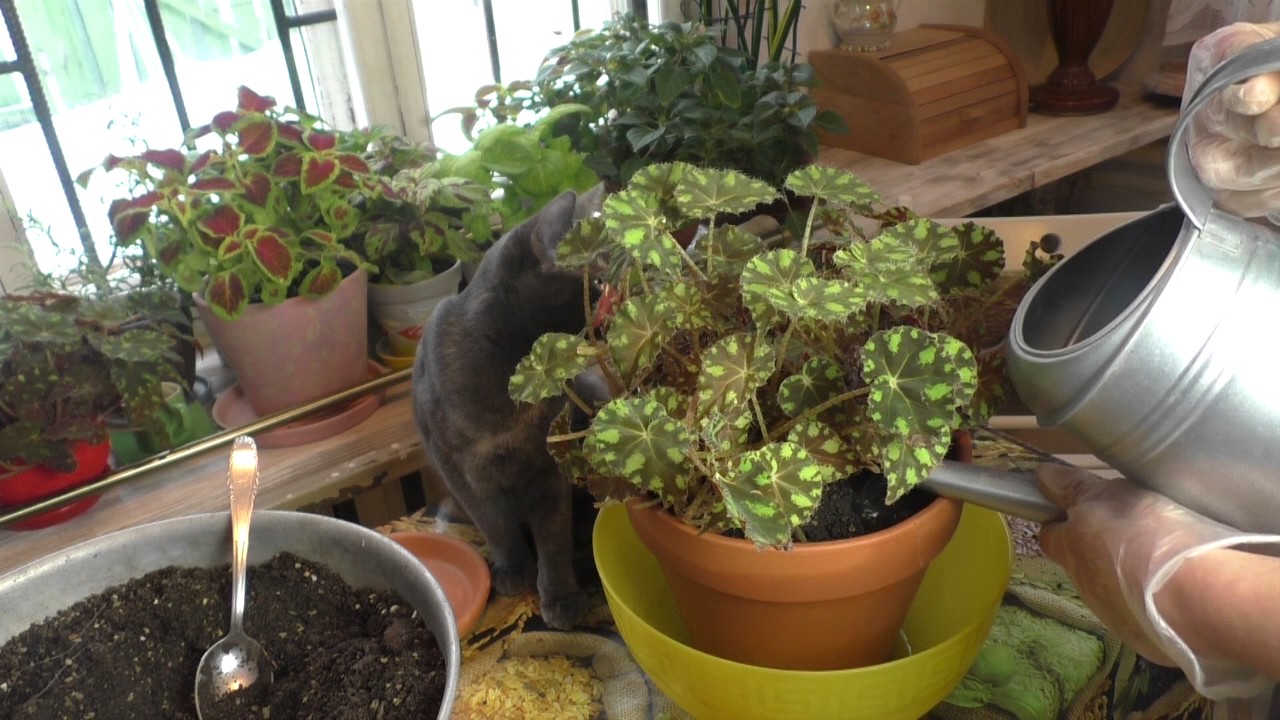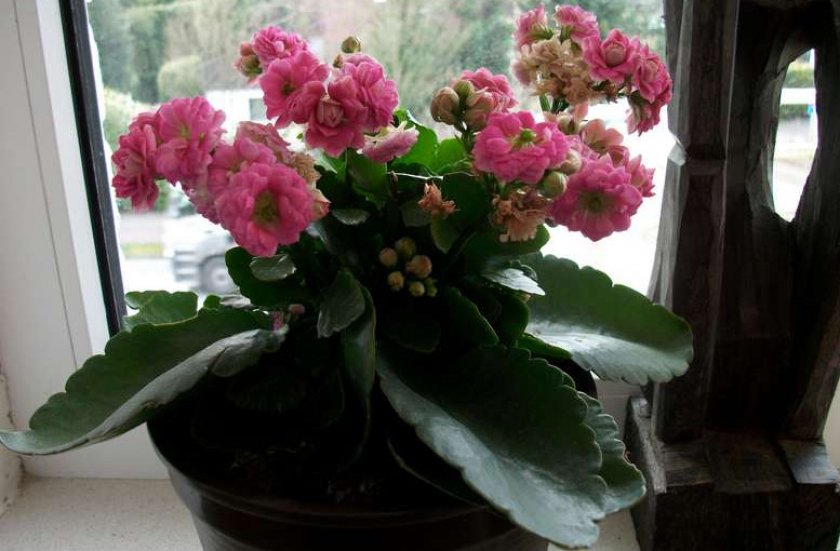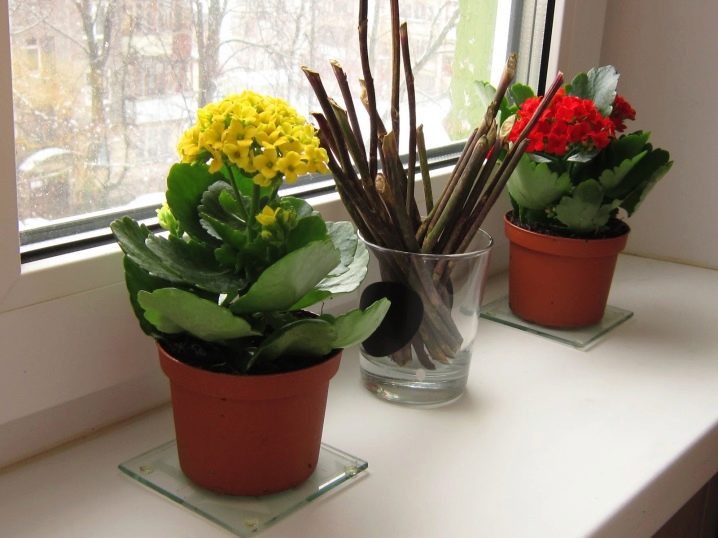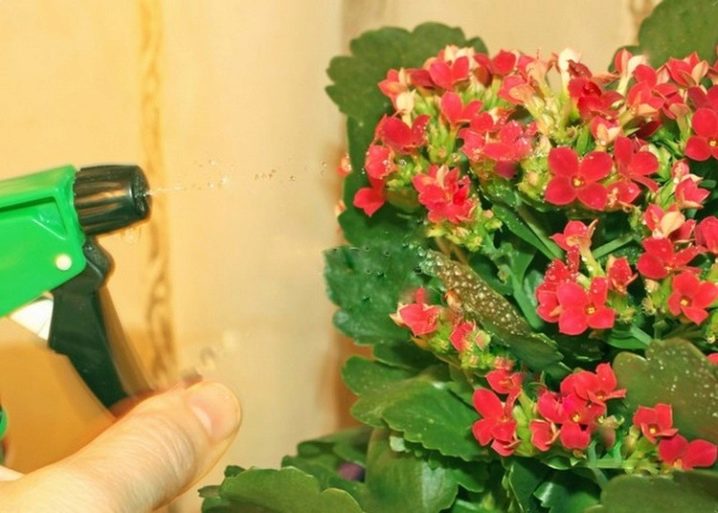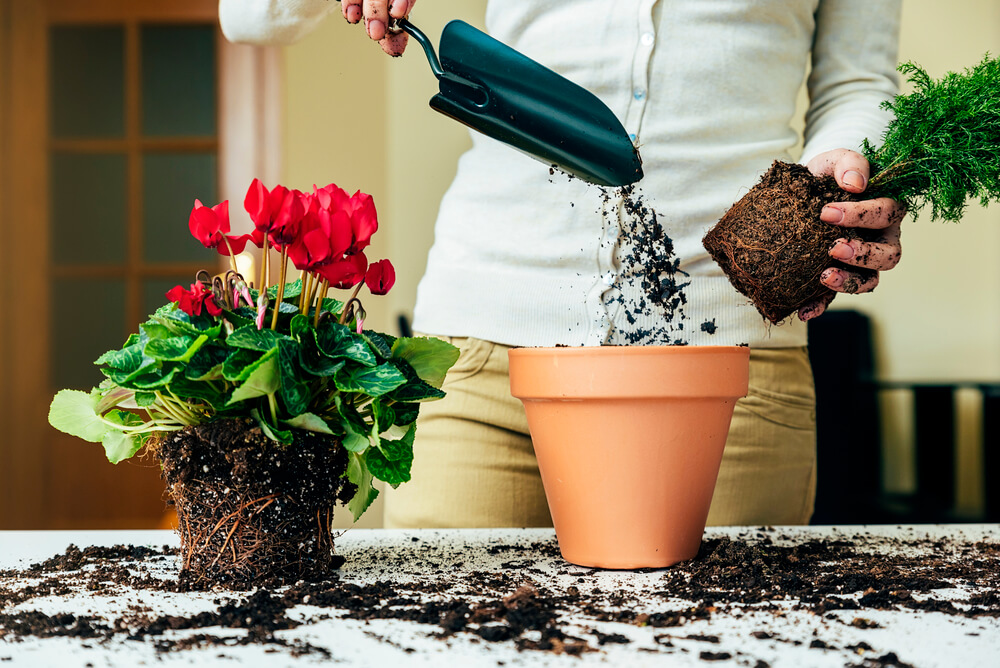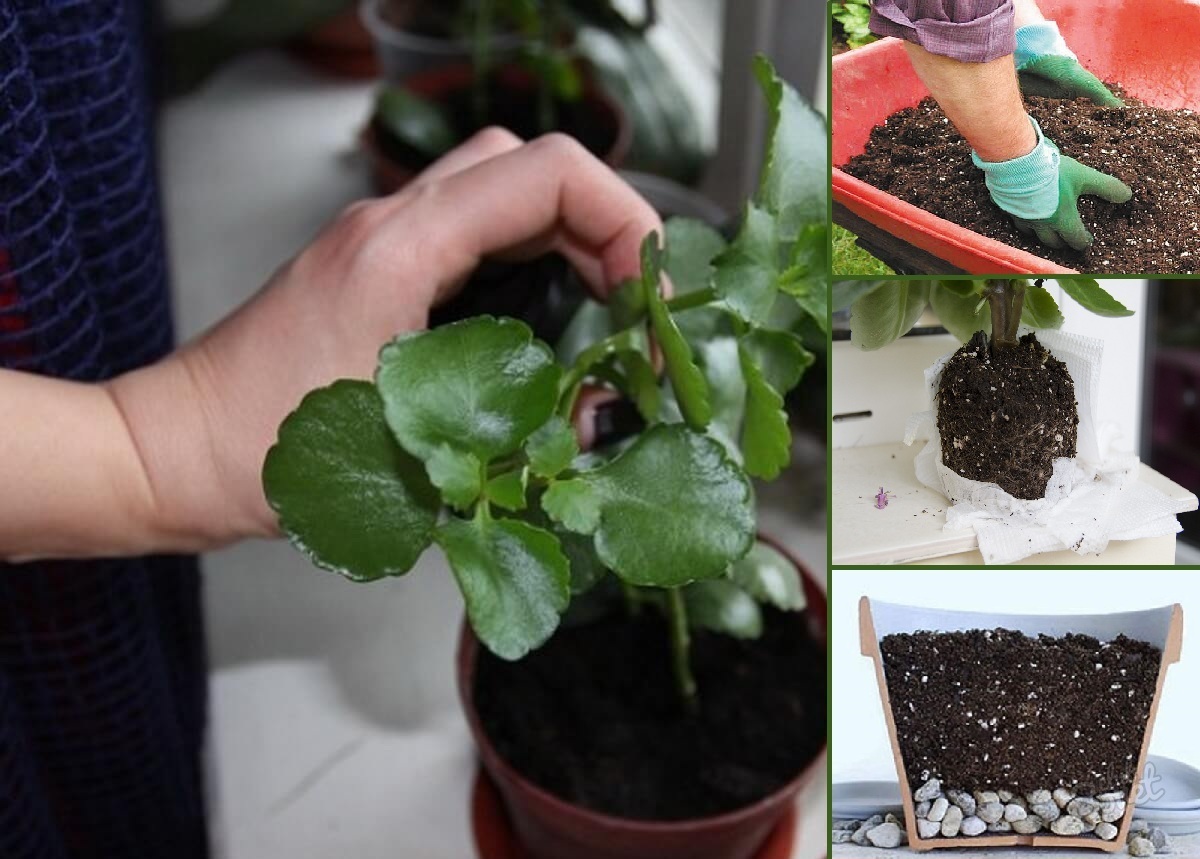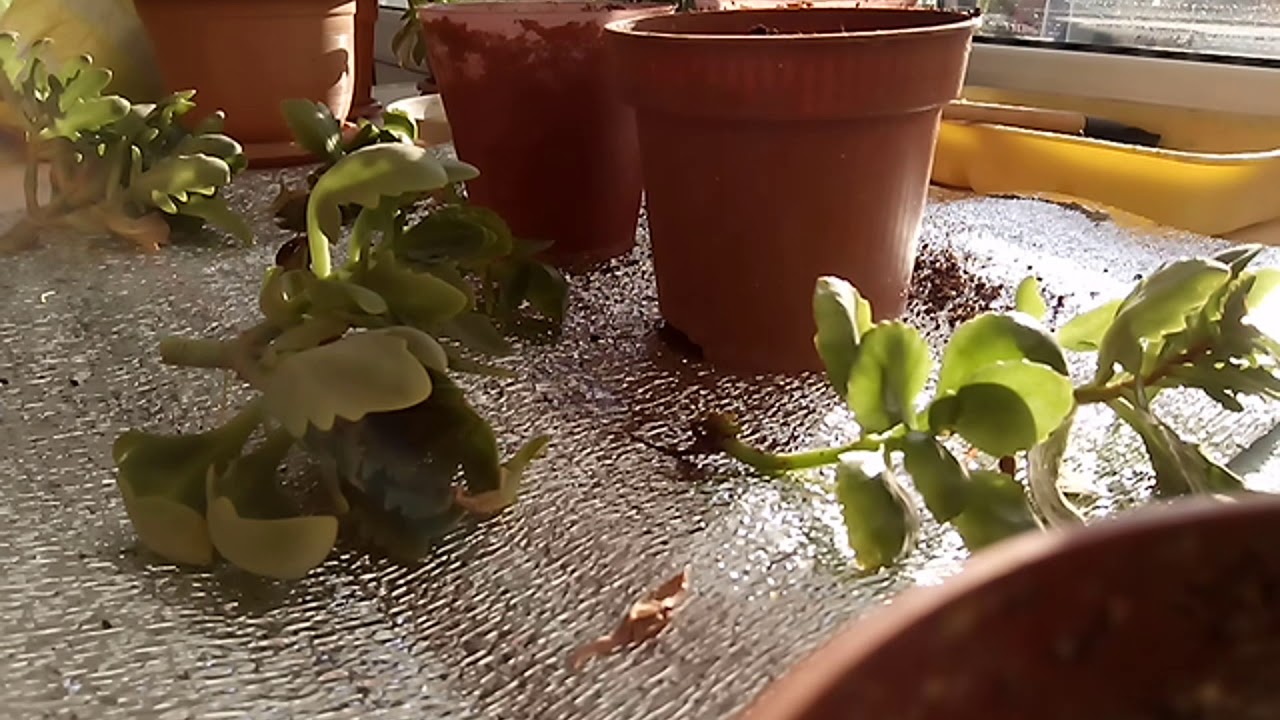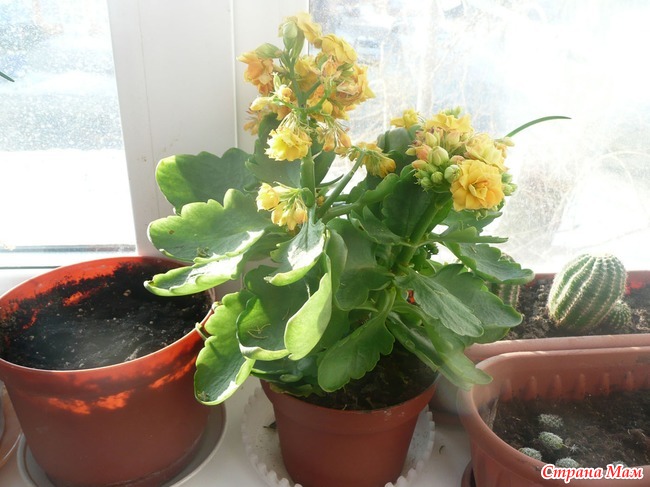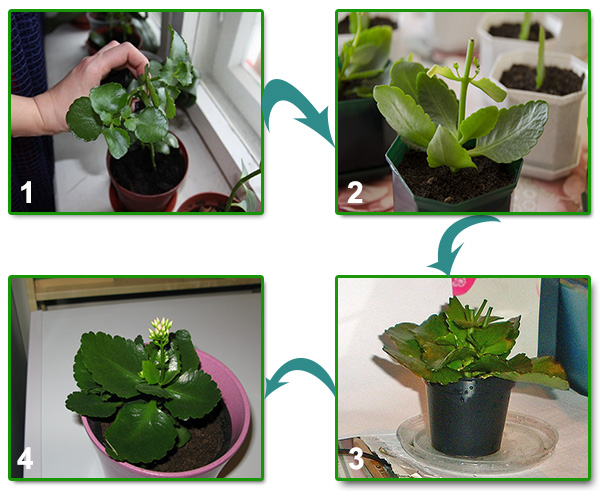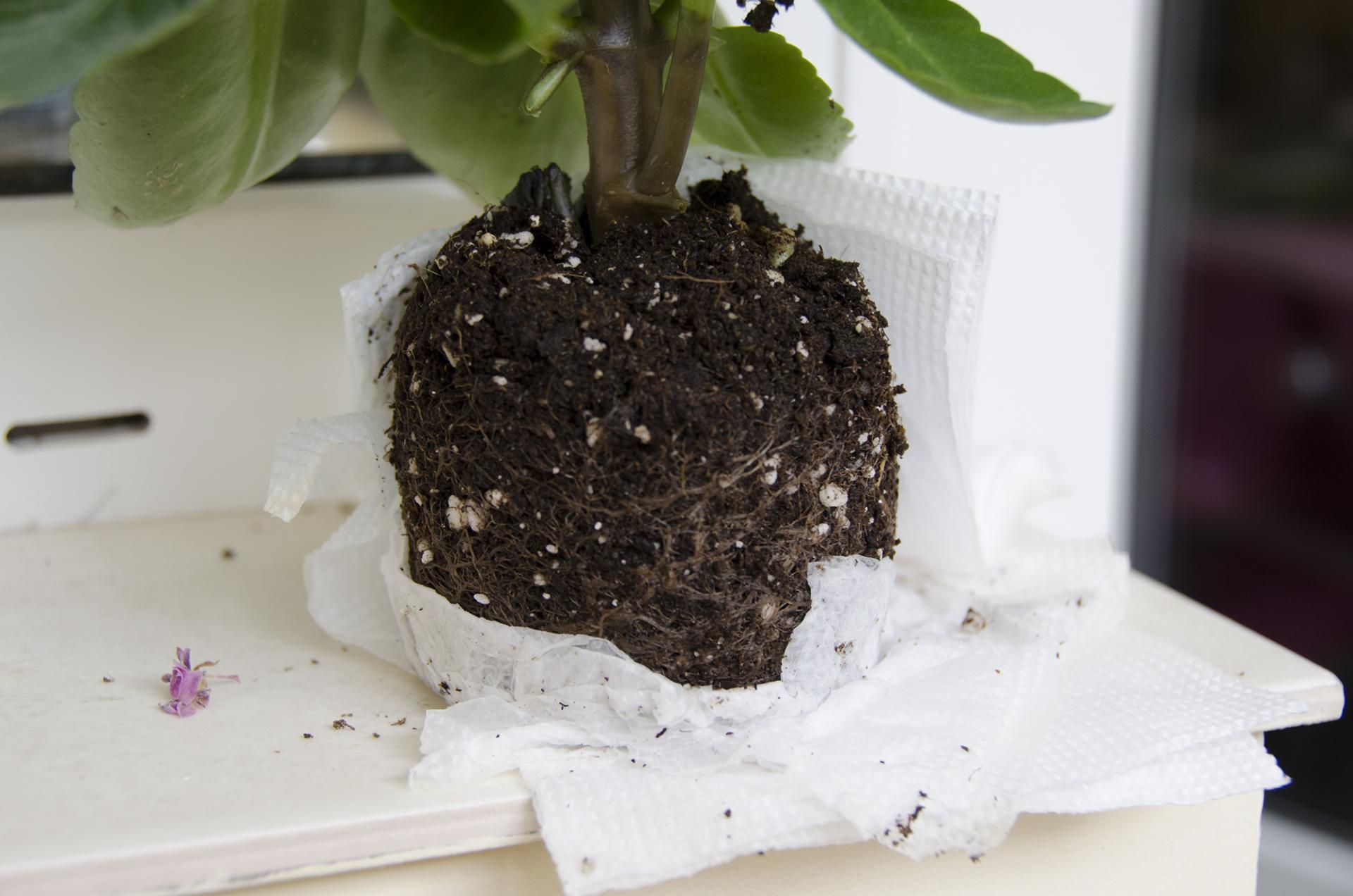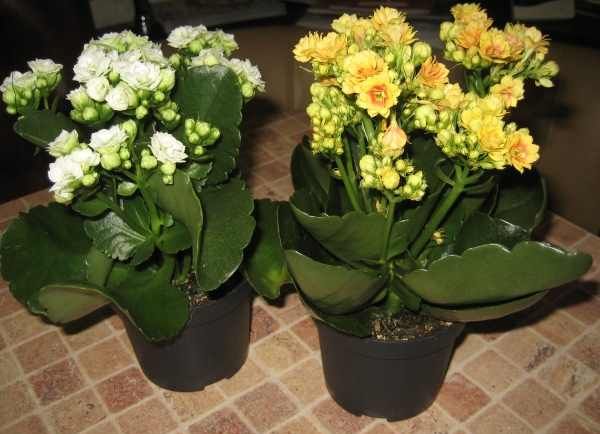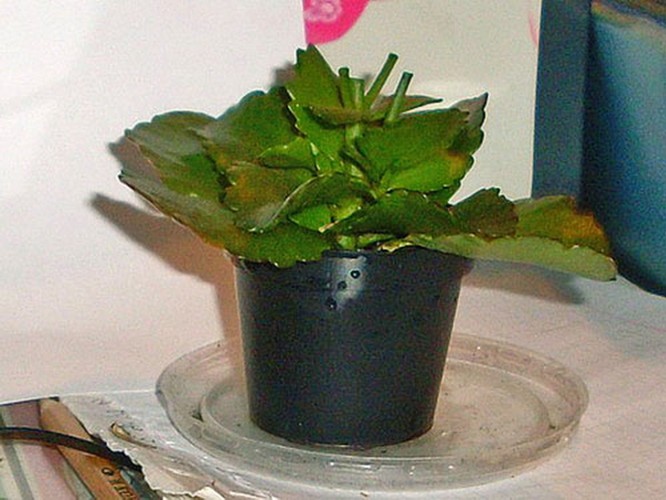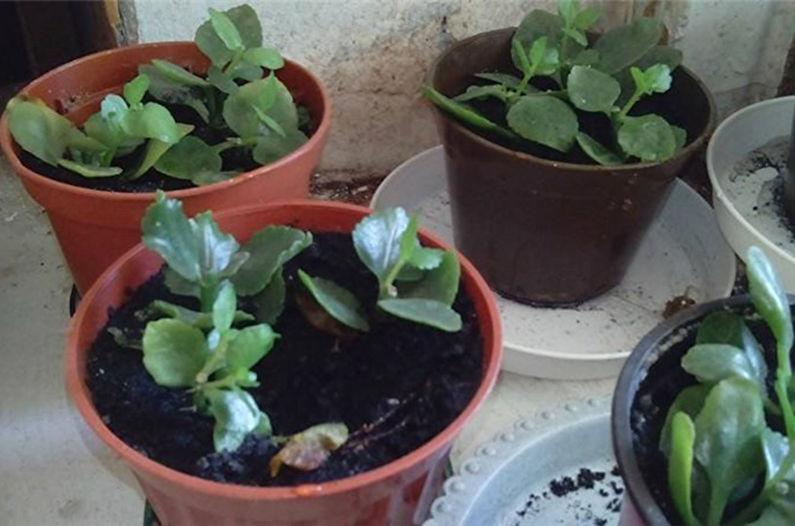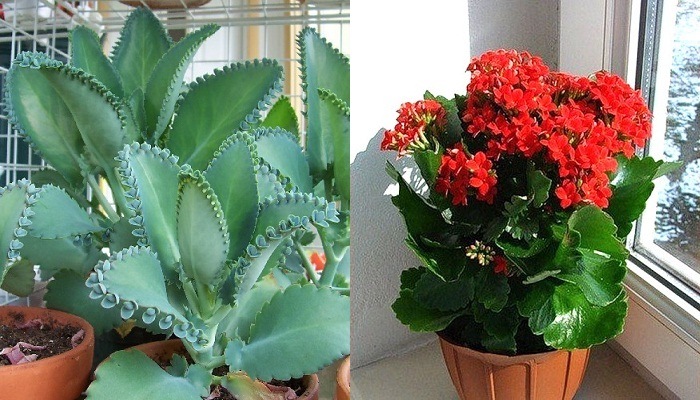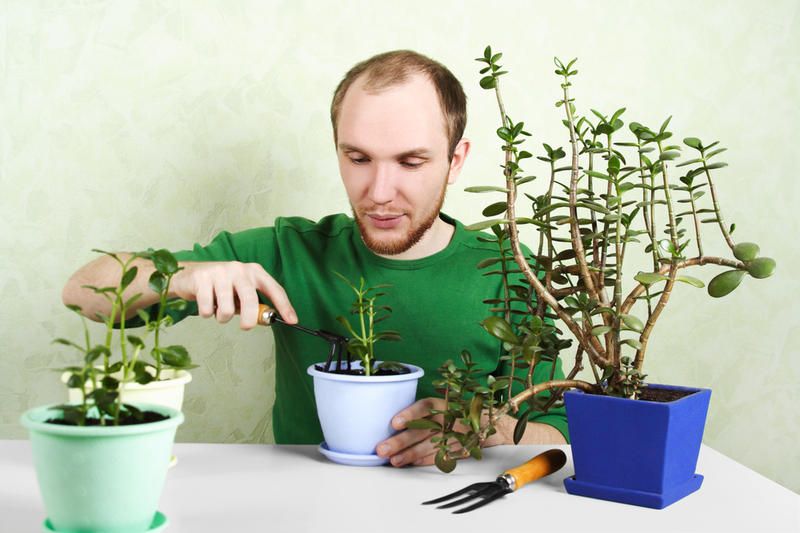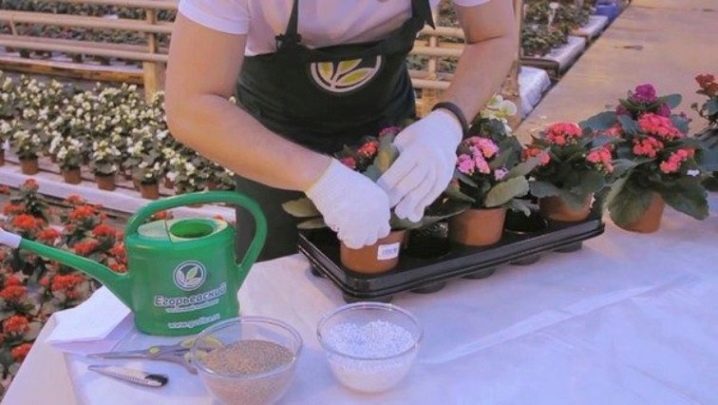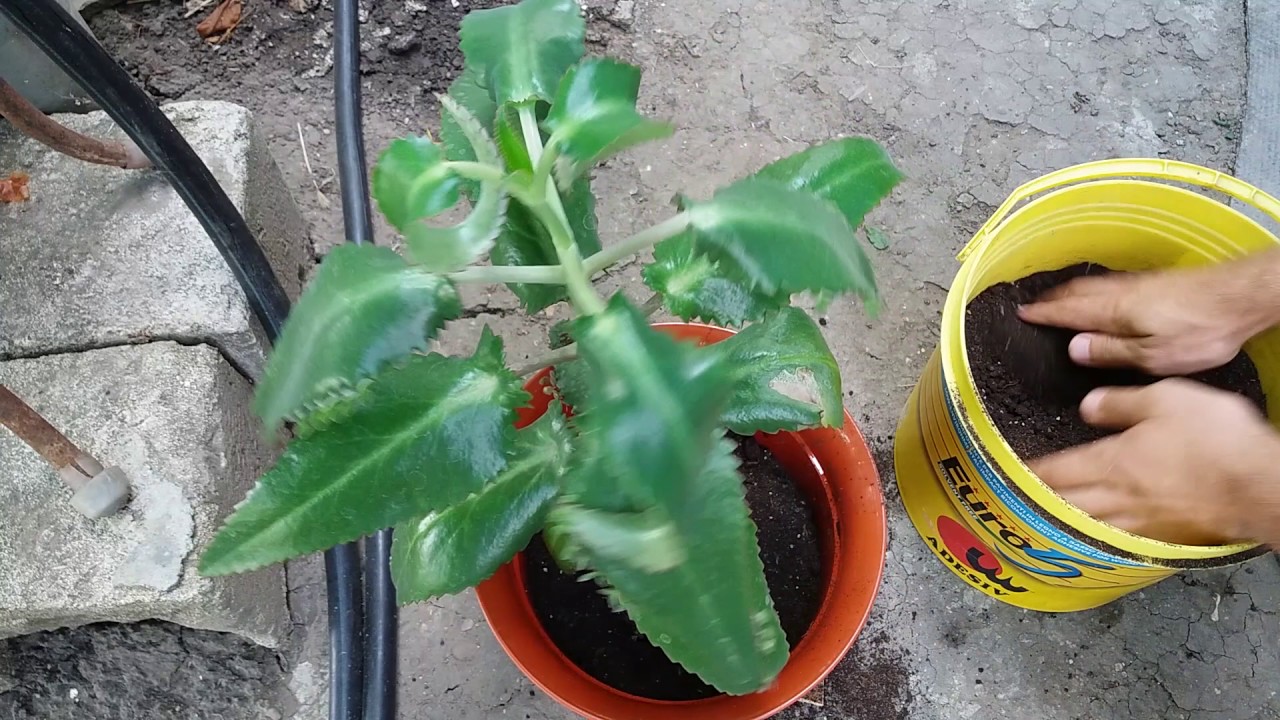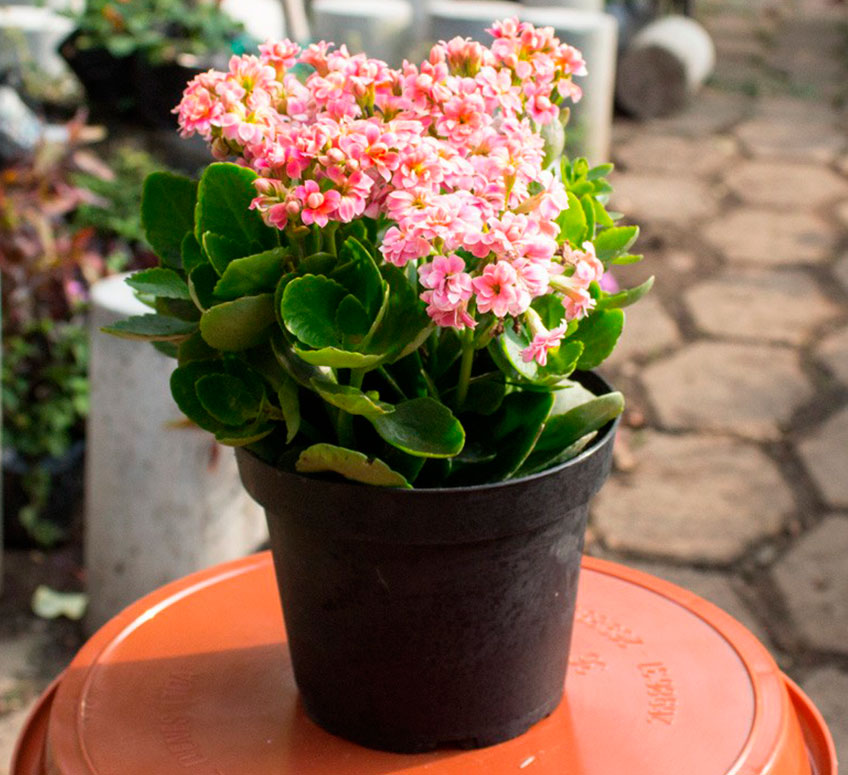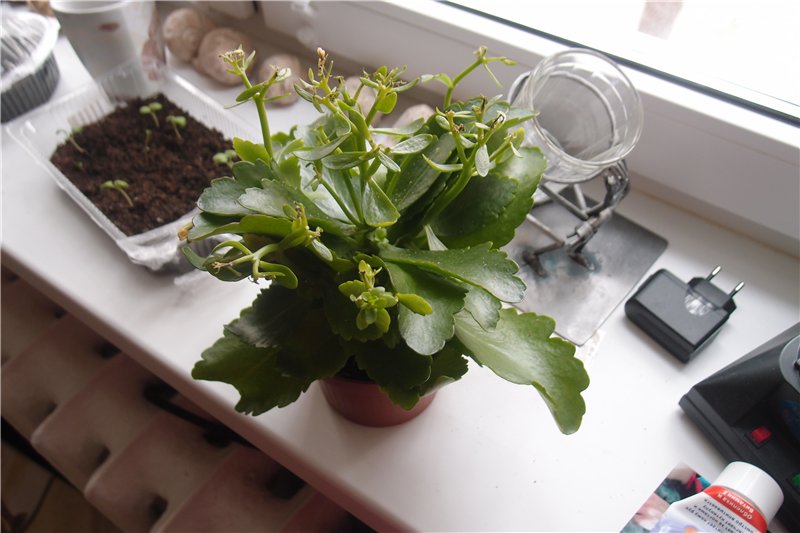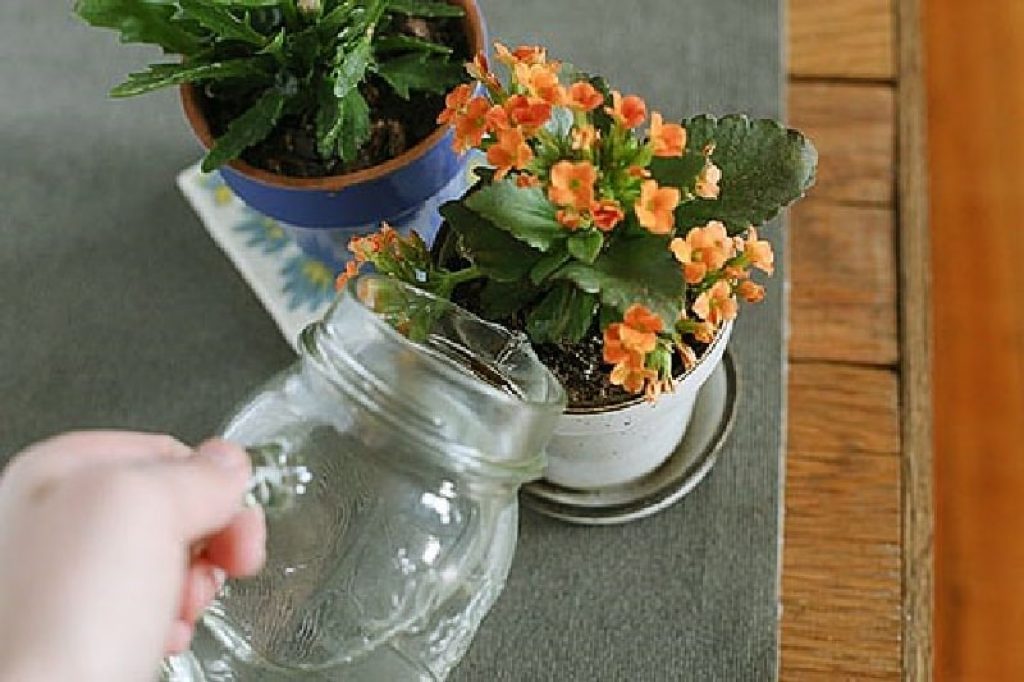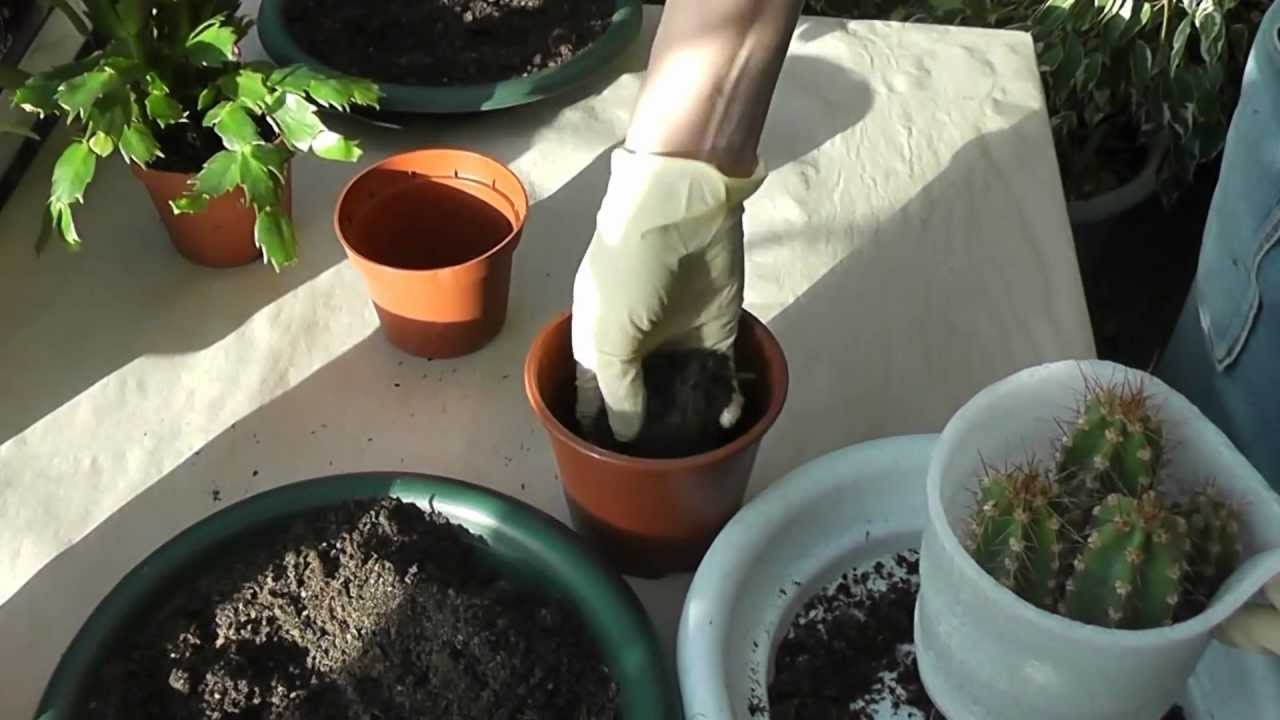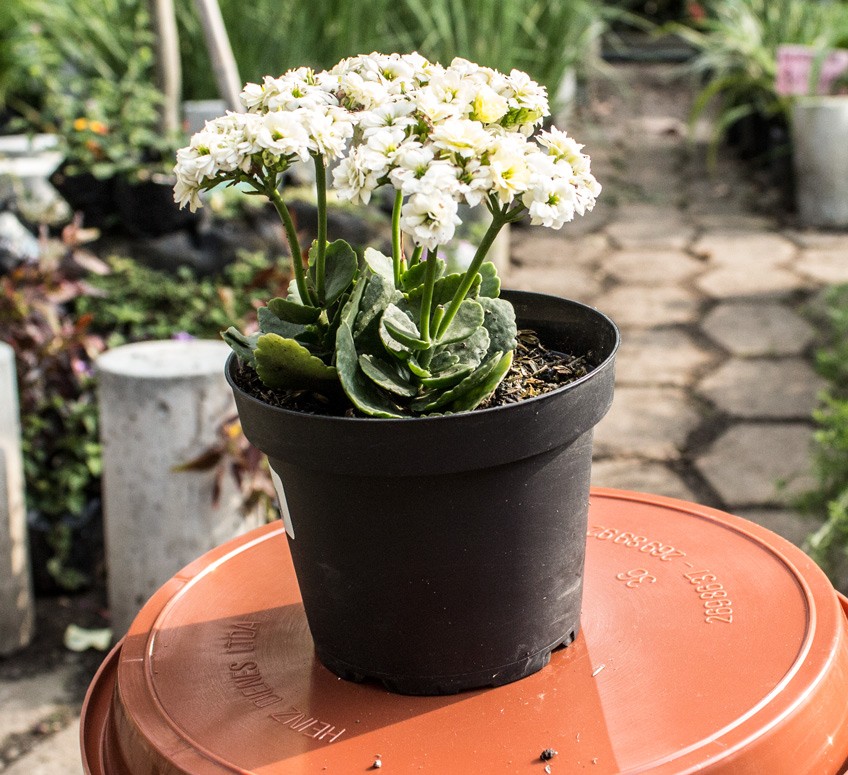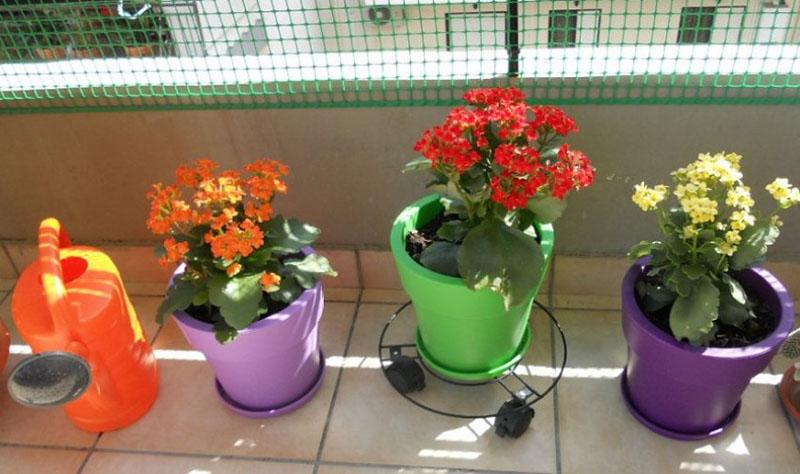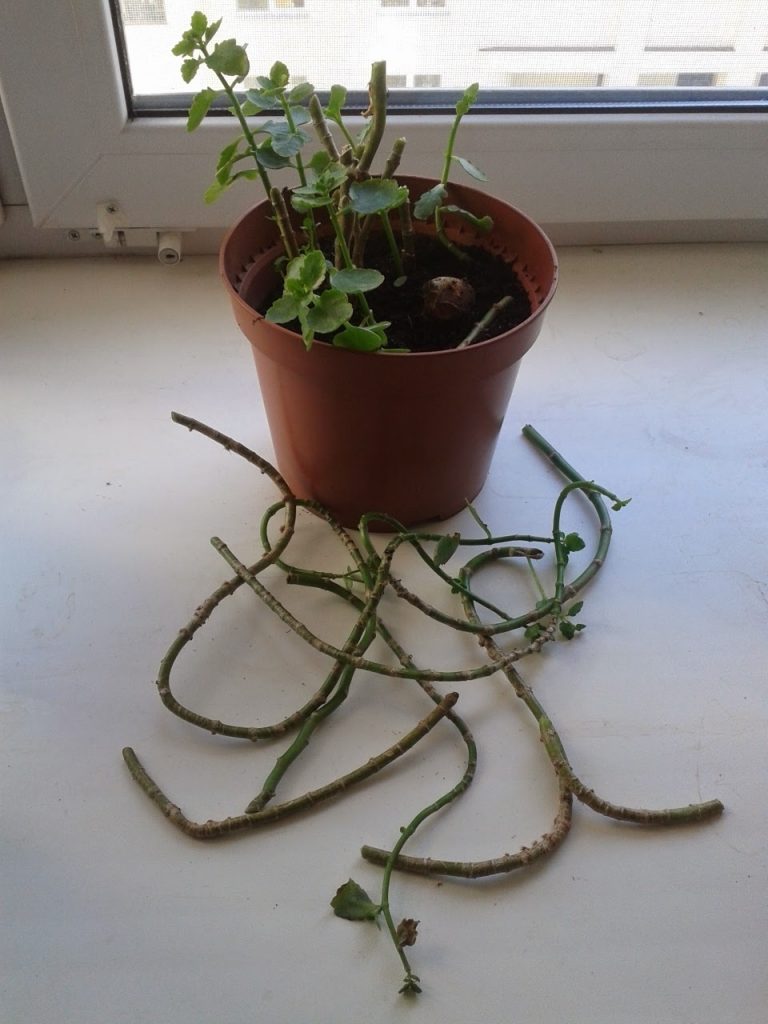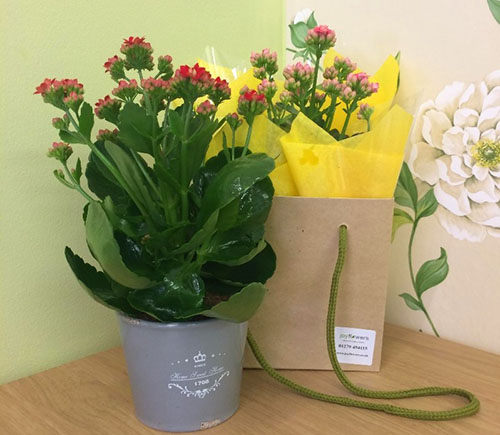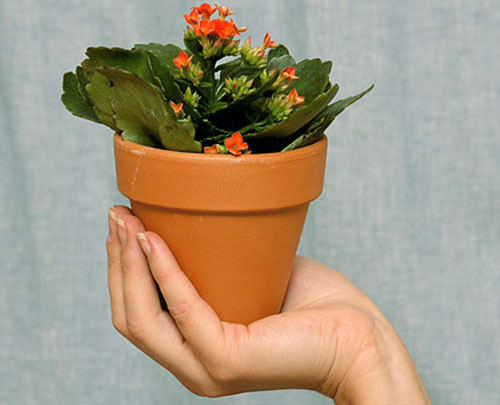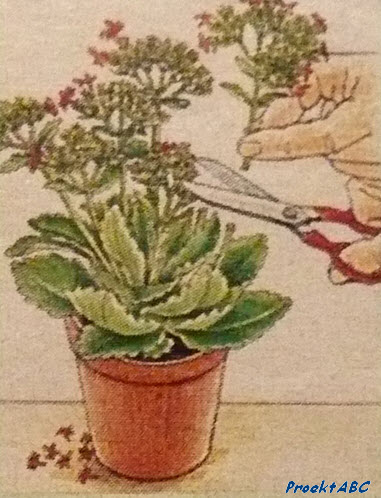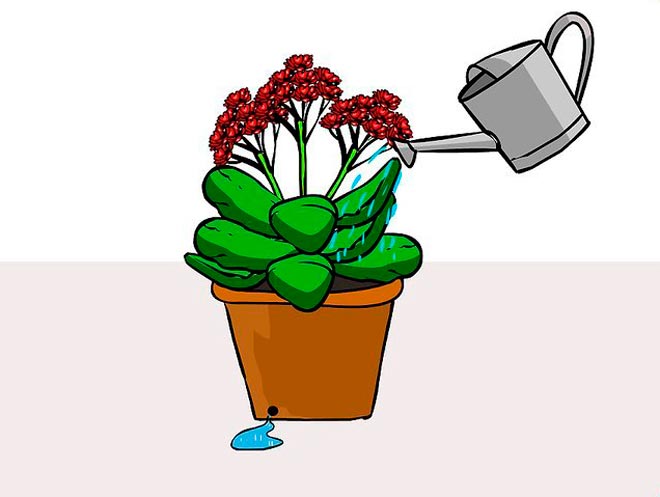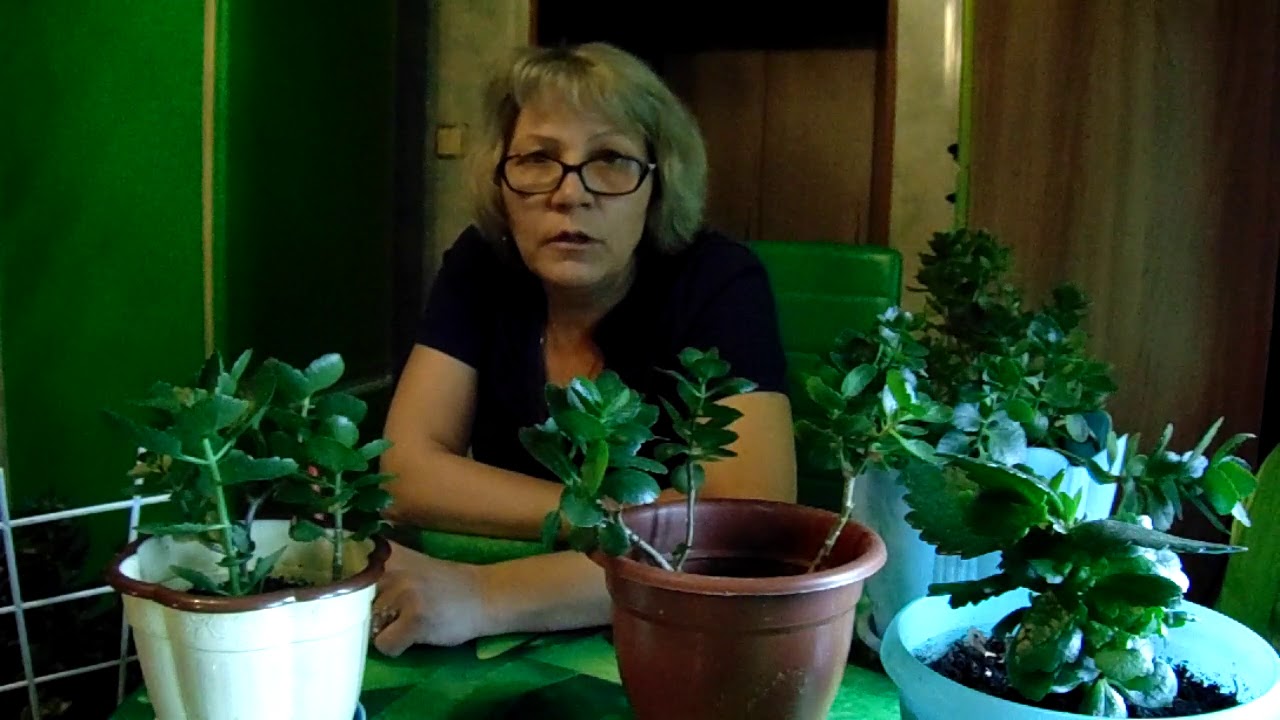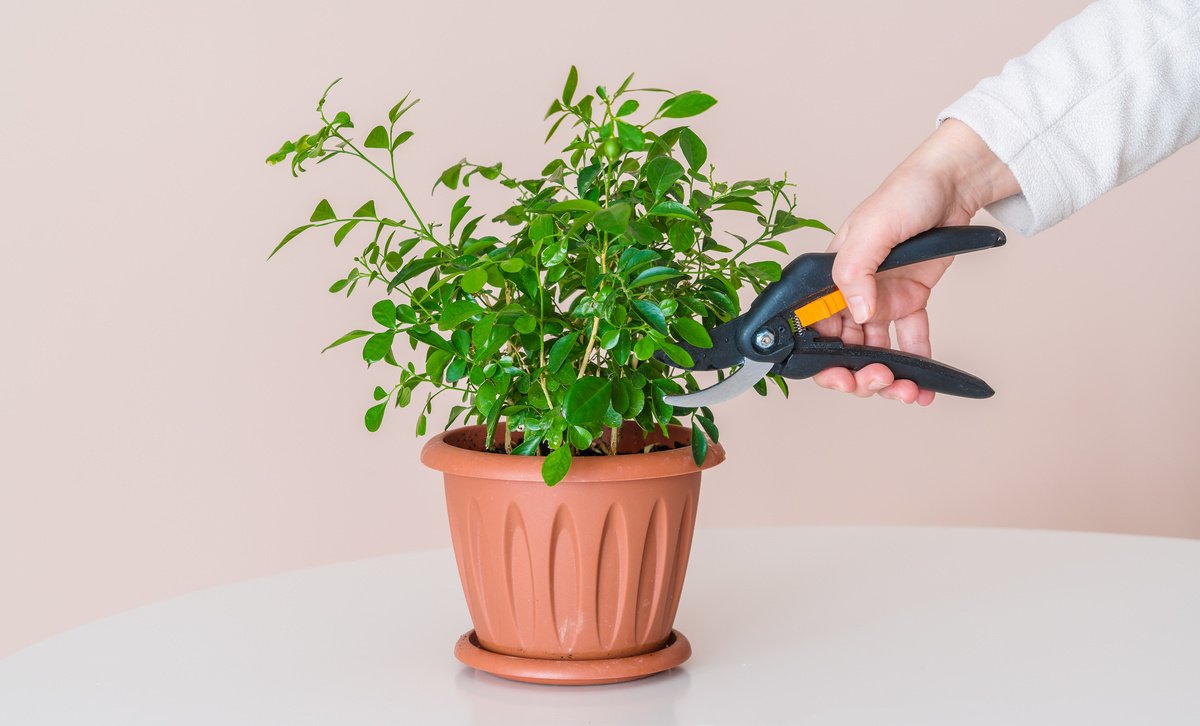How to achieve flowering
A flowering plant directs all its energies to the formation of inflorescences, redistributes nutrients in such a way as to ensure proper budding and violent flowering. How to transplant Kalanchoe without causing harm at home should be thought about only after the plant has faded.
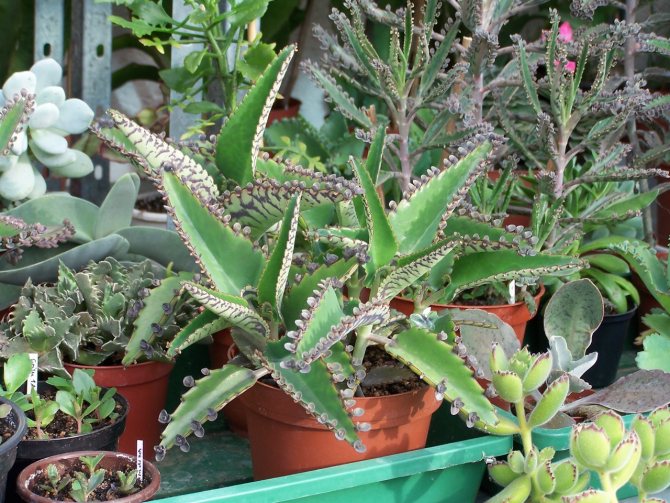

By settling in another pot and fresh substrate, the Kalanchoe must adapt the root system to new conditions. Having received more free space, the roots begin to actively grow, wasting a significant part of the nutrients, depriving the peduncles of a large portion of nutrition.
Thus, caring for Kalanchoe is simple, but why do many growers complain about the lack of flowering? How to care for Kalanchoe in this case:
the plant needs to be cut frequently and the shoots should be pinched. It is after such procedures that flower buds are laid, in addition, the bush will be lush and more compact.
If the flower has begun to stretch in length, you should also pay attention to the lighting, it may not be enough. Most of the trimming will be enough to add fluffiness;
another secret of forcing flowers is strictly limited daylight hours
Enough 7-8 hours of bright lighting, then the pot is covered with a box, bucket or other suitable object for 10 hours. After a couple of weeks of manipulations, flower stalks can be seen. It is best at this time to slightly increase the frequency of watering;
a common mistake of many flower growers is to arrange a drought on a flower. In nature, many plants easily tolerate the lack of moisture, but even succulents can die in an apartment. The soil should dry out completely between waterings, but its complete drying will lead to the death of the root system. Further, with abundant watering, the Kalanchoe will simply rot, it is no longer necessary to talk about flowering.
Important! Do not forget to transplant your green friend into fresh soil in time. The fact is that the soil is quickly depleted even with regular fertilization.
Therefore, once every six months, it is better to transplant the flower into a slightly larger pot.
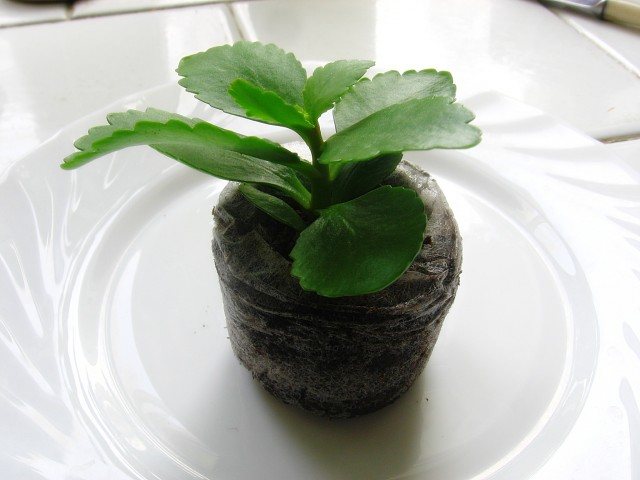
Kalanchoe blooms once a year, depending on the correct lighting. When flowering ends, partial cutting of the stems is carried out. Cuttings are left for reproduction. At the beginning of autumn, the flower goes into a dormant state. During this period, the following rules are observed:
- The bushes are kept at a temperature of 15 ... 18 ° C.
- Daylight hours are limited to 8 hours. The rest of the time the pot is covered.
- The amount of watering decreases.

It takes 30 days to rest. Then they go to the normal containment regime.
To prolong flowering, when caring for Kalanchoe Mini, they adhere to the following rules:
- maintain a sufficient level of illumination throughout the daylight hours;
- feed the plant with potassium and phosphorus before and during flowering;
- remove faded peduncles.
These rules not only prolong flowering, but also help make the Kalanchoe bloom at the right time.
Kalanchoe - home care

Irina March 01, 2019 Category: Houseplants
You can say about this flower: and how I lived without it! In any case, our mothers and grandmothers cannot imagine how it is possible not to have such a useful plant as Kalanchoe in the house.
I remember that it also grew in our house. And it is not surprising, because Kalanchoe medicinal is used for medicinal purposes: from the common cold, throat diseases, cuts and burns.
It was for these purposes that I begged an already well-grown flower from my mother-in-law.
Healing Kalanchoe and decorative
The tree of life, the room doctor, the indoor ginseng - what names the Kalanchoe has received for its usefulness and necessity.
And although different types of this plant look different, they all have healing properties. In total, more than 200 species of Kalanchoe are known in nature. Only a few of them are grown at home.
Most often Kalanchoe pinnate, Kalanchoe Blosfeld, Kalanchoe Daigremont, one-flowered Kalanchoe.
5 Kalanchoe medicines - recipes from our readers
But no matter what Kalanchoe you buy, home care for any representative of this plant is approximately the same. After all, they all belong to the same family - the bastards. These plants are inhabitants of the tropics.
They are adapted to a long stay, both in arid conditions and in conditions of high humidity. Kalanchoe leaves in favorable periods accumulate moisture, which the plant can then use for survival. Also, this flower does not need to be fertilized and transplanted often.
We can say that this plant gives us more than it requires of us.
In the photo: Decorative Kalanchoe
But, despite the unpretentiousness of this plant, it is worth remembering how to care for the Kalanchoe at home.
Watering Kalanchoe
This plant, as I said, accumulates moisture in the leaves. So it easily endures a certain period of forced drought - for example, during your absence from home. But the gulf has a destructive effect on him. And it's not about the amount of water poured out.
How to grow aloe - a large list of species
When watering, the soil must be moistened abundantly - so that the water completely soaks the earthen lump. But its surplus must be drained. And to avoid flooding, you just need to select the correct watering frequency. A clod of earth must dry out between water treatments.
In the photo: Kalanchoe leaves
Most often, you can water only during the heat. And in winter, on the contrary, you need to do this less often - once every 10-14 days. If the Kalanchoe is poured, then its roots may begin to rot. Also, excessive moisture is fraught with the fact that the plant will suffer from mold and rot.
Kalanchoe transplant
Kalanchoe refers to fast-growing flowers, therefore it requires frequent transplantation - once a year, at the end of March. Adult plants can be sprinkled with new soil, but provided that the roots do not go beyond the boundaries of the pot.
How and what to fertilize flowers
It is necessary to transplant Kalanchoe into a pot larger than the previous one by 2-3 cm in diameter
When transplanting, you need to very carefully pull the flower out of the container - since it has very fragile leaves and stems. The soil is suitable for this composition: Sod earth (1 part), leafy earth (1) and sand (1), you can also add humus
4.45 1 1 1 1 1 4.45 (220 votes)
Sections: Houseplants, Beautifully flowering, Ornamental-deciduous, Crassula, Medicinal, Plants on K
Kalanchoe blooming - home care
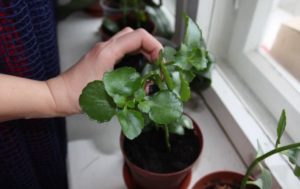
Kalanchoe - a bright representative of the Tolstyanka family, it can be both decorative (Blossfeld) and medicinal (Degremona). Blooming Kalanchoe unpretentious in care and rare beauty.
Let's consider in more detail: caring for a blooming Kalanchoe at home, transplanting, reproduction, proper watering and feeding for abundant flowering. Kalanchoe care after flowering.
Kalanchoe flower ALL ABOUT CARE
Kalanchoe flower
Decorative flowering Kalanchoe has dense, fleshy leaves, with beautiful caps of inflorescences of various shades. With proper care, up to 8 months pleases with a beautiful flowering. The leaves are wavy at the edges.
Kalanchoe tolerates high humidity and dry conditions.In favorable periods, the leaves of the plant accumulate moisture, which is later used for survival.
Blooming Kalanchoe resistant to various diseases and pests, easily multiplies.
Lighting
For normal growth, any place in the house is suitable, where even a little sunlight falls. The plant grows well in partial shade or when exposed to diffused sunlight.
When exposed to direct sunlight, the color of the leaves at the edges will change, they become reddish.
The ideal place in the house would be east or west window, with not very intense lighting. Blooming Kalanchoe prefers an east or southeast window.
During the flowering of the Kalanchoe in the spring and autumn, additional lighting will be needed.
Not enough light leads to stretching of plants, the upper leaves turn pale and the lower ones die off.
Watering
Kalanchoe accumulates moisture in the leaves, and tolerates drought or, for example, your absence. Plants are afraid of stagnant water.
Watering must be done abundantly in order to wet the entire clod of earth, but the remaining moisture must be drained.
For yourself, decide on the correct frequency of watering, the earthen lump should dry out between waterings.
Most often, watering is carried out in the summer heat, in winter the interval between waterings is 10-14 days.
If you pour the plants, the roots will begin to rot, various rot and fungi will appear.
Humidity
At home, Kalanchoe does not need to be sprayed. It is especially dangerous to spray in winter. If the leaves are covered with dust, the best way to get rid of it is to wipe with a damp cloth or, alternatively, wash in the shower.
Top dressing
About 1 time per month, Kalanchoe needs to be fed using fertilizers for succulents.
For flowering Kalanchoe, use complex fertilizersotherwise the plant will not bloom.
Attention: an excess of fertilizers is dangerous for the Kalanchoe. It is better, when feeding, to dilute half the dose or a third according to the instructions of the drug used
Do not feed in winter
It is better to dilute half the dose or a third when carrying out feeding according to the instructions of the drug used. Do not feed in winter.
Transfer
Plants require annual replanting in late March... Mature plants can be transplanted every 3 years or sprinkle with fertile soil, provided that the roots do not look beyond the boundaries of the pot. You can also transplant after flowering.
For transplanting, you need to pick up a pot 2-3 cm larger than the previous one in diameter
Remove the flower carefully when transplanting so as not to damage the plant.
Pests
Of the pests, the scale insect, spider mite and mealybug can attack the Kalanchoe.
Mealybug removed with a wet cloth soaked in alcohol.
In the fight against scabbard and tick insecticide treatment will help. A good remedy is Fitover, does not harm humans and pets.
Kalanchoe care after flowering
After all flowers have bloomed, the Kalanchoe must be cut off. Pruning is done to remove peduncles and extra leaves, and to form bushes. Prune in the morning.
Cut the flower stalks as low as possible so that the plant does not start to rot.
This pruning stimulates the growth of new shoots ready to bloom. After pruning, the Kalanchoe requires rest, so reduce watering and prevent direct sunlight. Thanks to pruning, the bush will be healthy, it will become lush with a lot of beautiful flower stalks.
Observing the tips for caring for the flowering Kalanchoe, the plant will delight you with flowering throughout the summer-autumn period.
Reproduction
At home, Kalanchoe propagates by cuttings, children or seeds. The first two methods are the simplest and fastest.
When propagating by cuttings, you can use apical cuttings, which have at least 3 pairs of leaves.Before rooting, it is recommended that the cut sites be dried a little and treated with crushed activated carbon to prevent decay.
Rooting can be carried out both in water and in soil. In the first case, boiled water at room temperature is used. Roots appear in 10-15 days. In the second case, a mixture of peat and sand is used for rooting, the cuttings are deepened by 1-2 cm.
Keep at a temperature of 20-24 degrees. Do not cover them with foil or glass. After they take root and start growing, they are seated in individual pots.
Some plant species form small “babies” with roots at the edges of the leaves. They often fall to the ground on their own and take root. They can be planted separately in a container (in a mixture of light soil and peat) at a distance of 3-4 cm from each other. When planting, the "kids" do not go deep, their leaves should be on the surface. Watering is moderate. When young specimens grow up, they are planted in separate pots.
Seed propagation of Kalanchoe is a very laborious process that is almost never used by amateur flower growers. Moreover, it is almost impossible to obtain plant seeds at home.
You can read more about the breeding of Kalanchoe here.
Propagation by cuttings
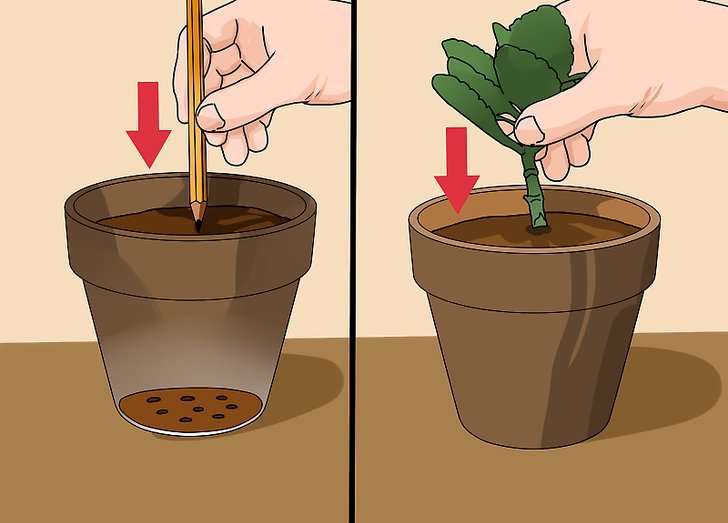
The best way to breed Kalanchoe is to use cuttings. To do this, after flowering is complete, it is necessary to carefully cut one branch of the plant with garden shears. Then you should remove all available leaves 5 cm from its base and put the resulting stalk to dry in the open air for 3 days. During the drying process, the formation of the so-called callus occurs at the cutting edge of the cutting.
After 3 days, the cutting should be planted in a potted soil. To do this, it is necessary to prepare this soil, it is recommended to use a mixture consisting of 60% peat and 40% perlite as a substrate, which provides good drainage conditions for planting. It is recommended to use an earthen flower pot as it allows air to pass through well.
The planting process is simple: you need to make a hole in the substrate with a pen or pencil and place a dry cutting in it. Some gardeners, before planting in the ground, dip the cutting into a mixture that stimulates the development of the root system.
Once the small plant has been placed in the pot, it should be lightly watered and then covered with a clear plastic bag to help maintain a humid atmosphere. After these measures, the pot must be placed in a well-lit place and from time to time check the condition of the soil and water it if it is dry.
Kalanchoe cuttings begin to take root 2-3 weeks after they are planted in the ground. After this time, the plastic bag can be removed from the pot and the flower can be looked after as if it were an adult plant. Below is an example of transplanting actions in the photo. Kalanchoe flower at home requires simple care.
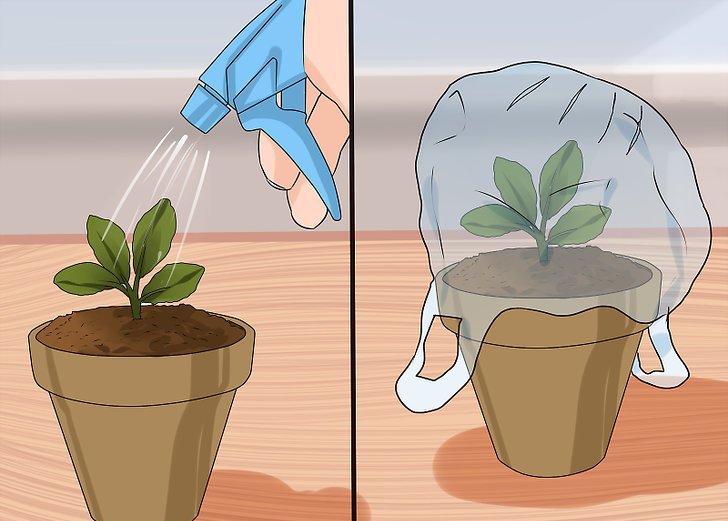
Planting and caring for Kalanchoe outdoors in the garden
To grow Kalanchoe outdoors in the open field, it is necessary to gradually accustom the plant to weather outdoor conditions. A couple of times before transplanting a flower, you should take the pot out to the balcony, gradually increasing the length of stay.
Northern latitudes are not suitable for growing a succulent outdoors, however, in the Middle Lane, the flower will have a great summer outdoors. For example, in the Moscow region this method of cultivation has long been practiced. The main thing is to follow the rules when planting and caring for Kalanchoe outdoors in the garden.
It is necessary to choose a place for planting a flower where it will be provided with at least 10-hour daylight hours. In this case, you need to protect the bush from direct rays of the sun. From time to time you need to loosen the soil, it is recommended to carry out the procedure after each watering. Watering the flower is necessary when the topsoil dries up.Too wet soil will lead to rot and fungus, which can cause serious illness.
For your information! It is necessary to prune the bush from unnecessary peduncles, which helps to save its strength. You also need to remove rotten and dried leaves and shoots in time.
Lighting, temperature, humidity
The plant loves light and can be safely placed in all directions, except for the north. You should also know that the Kalanchoe is blooming, loves light more than its counterparts and can suffer in winter with insufficient natural light. In this case, you will have to take care of an additional light source in winter. It is quite easy to understand when additional lighting is needed. The leaves of the plant will turn pale, and its stems will stretch out and begin to lose leaves at the bottom. The Kalanchoe does not have any special requirements for temperature.
You can safely keep the plant on the balcony, even at +12 degrees. This is the minimum temperature for a flower in winter. Summer can be considered the most favorable temperature at a level of up to +27 degrees.
There is no need to maintain a certain level of humidity. The only thing that should be warned against in winter is against water getting on the leaves, this can be extremely bad in the future, affect the plant. During the warm season, it is worth periodically washing off the dust from the leaves.
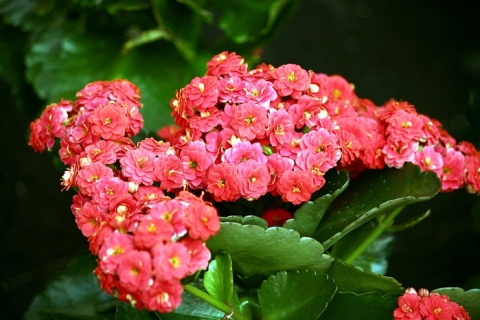
Transfer
How and when can you transplant Kalanchoe at home? Kalanchoe transplant at home is done once a year, every spring. This must be done strictly after flowering is complete.
The need for transplanting is that the plant develops, the root system grows and ceases to fit in the pot, it becomes small.
A new pot must be purchased larger than the previous one. The new container is washed with soap and rinsed with potassium permanganate.
How to properly transplant or plant a flowering Kalanchoe in another pot? Before proceeding with the transplant, the flower is thoroughly watered and pulled out of the pot.
If the plant is not too large, the excess soil is shaken off the roots. If there are diseased roots, they are cut off.
You need to act very carefully so as not to damage healthy roots.
Is it possible to transplant Kalanchoe in autumn? No. It is necessary to transplant Kalanchoe in late spring, when the plant is in its most active phase.
Drainage is poured onto the bottom of the pot, then a layer of sand and a small layer of earth. After, the plant is placed in a pot and sprinkled with earth so that no roots remain on the surface. Then watering follows. If necessary, sprinkle some more earth.
You cannot call the Kalanchoe a whimsical plant. Growing it will not create big problems for both an experienced gardener and an amateur.
The main thing is to follow simple recommendations, and the plant will delight its owner with a healthy look and long flowering.
Possible problems
Why do Kalanchoe leaves turn yellow? This problem occurs for various reasons:
- Insufficient lighting can cause yellowing of the foliage. If the flower is illuminated for less than 12 hours a day, then it may start to wilt.
- Kalanchoe is an unpretentious flower. It can grow in a wide temperature range. But when the temperature drops to +10 degrees, the foliage begins to turn yellow.
- Kalanchoe dries out most often due to insufficient moisture level. Heating devices in winter may be the reason. In this case, the plant must be sprayed daily with a spray bottle.
- Overflow can be the cause of the wilting of the flower. The flower must be watered with settled water. In winter, the amount of moisture should be kept to a minimum.

If you still did not manage to find out why the plant dries and turns yellow, then it will have to be transplanted into a new container by adding fresh soil. During transplanting, it is necessary to check the roots and remove the rotten parts.
Pay attention to the pests on the plant.The root system can be treated with charcoal or other protective agents
Kalanchoe is an unpretentious plant that does not require special conditions. The flower can be safely called a long-liver.
Home care
The conditions for keeping a flower during a dormant period lasting about a month implies:
- limited watering to once every three weeks;
- being in a dark place without sunlight;
- maintaining the temperature up to + 16 ° C.
For indoor bush, diffused light is best, so you need to remove it from the sunny windowsill. On particularly hot days, additional humidification can be connected by spraying with warm water. In summer, it is recommended to give additional fertilizing once a week (special fertilizer for succulents and cacti, sold in flower shops). For the bush, bottom watering is preferable, sharply reducing in winter.
Thus, it is imperative to take care of the Kalanchoe, but such care should not cause difficulties. With a little effort and patience, you can grow a beautiful, lush plant that is famous for its medicinal properties. And thanks to the large number of shoots that regularly ripen on the main bush, you can please your friends and loved ones with a new indoor plant.

Kalanchoe - home transplant
There are only two reasons for transplanting a plant into a new pot: this is done after the purchase, or it is planned.
Planned transplant
Usually Kalanchoe is transplanted every 12 months. Adult specimens over 5 years old do not need to be disturbed so often and change the soil for them every 2 years. Sometimes a transplant is required for emergency reasons:
- roots peek out from the lower drainage holes of the pot - the flower has outgrown its house;
- the soil has become too dense and has ceased to absorb moisture;
- decay of the roots occurred - resuscitation measures are needed.
In the process of transplanting, it may turn out that the crown of the plant has grown too much to the sides and has lost its neat shape. Pruning is carried out at the same time. Elongated shoots are removed, returning an attractive appearance to the succulent.
Note! Each of the cut shoots is a good planting material. Twigs can be rooted and in this way multiply the Kalanchoe variety you like.
There are two ways to root shoots (cuttings):
- In water. A glass of water is covered with paper with a hole into which the handle is inserted so that only its tip to the bottom pair of leaves is immersed in water. After 2-3 weeks, thin white roots should appear. After that, you can immediately plant such cuttings in the smallest pots (7-9 cm in diameter).
- In the soil. The cuttings are left in the air for several hours to dry the slices. Then each should be planted in standard soil for succulents and left for 2 days without watering. Then, within 1-2 weeks, the top layer of the soil is moistened as it dries up from a spray bottle (do not water!). After a month, the successfully rooted specimens can be transplanted into permanent individual pots.

A sufficient number of roots on the handle for planting
Kalanchoe - transplant after purchase
A week after purchase, the appearance of the succulent, the quality of the soil in the pot and the size of the container are assessed. Usually, everything indicates the need for transplanting (the pot is small, the soil is poor, the buds are rapidly withering).
It is not worth postponing this work for a long time, as this will negatively affect the appearance of the plant.
Signs of improper watering
Kalanchoe is not immune from the effects of pests and diseases, however, a florist can minimize the likelihood of their occurrence, and primarily by optimizing the irrigation regime. Lack of moisture, like its excess, negatively affects the state of various parts of the plant, and the most popular problems associated with violation of soil moisture requirements will be the following:
- Shredding of leaf blades and excessive stretching of the stem part. Most often, the reason for this phenomenon will be excessive moisture in the substrate in winter, especially if there is not enough light in the room with the flower. To eliminate the consequences of such a violation, it is necessary to increase the temperature, move the pot with the plant under the phytolamp and reduce the amount of irrigation liquid the next time it is used (after the soil dries out).
- The appearance of stem rot, which manifests itself in thinning of the shoots and darkening of the stem part: from the bottom to the very top. Treatment of Kalanchoe in this case will not bring the desired result, therefore, it remains only to cut off the healthy apical parts and root them to obtain a new plant, and the bush damaged by rot will have to be thrown away.
- The development of dropsy (the leaves of the Kalanchoe are covered with swollen growths that resemble blisters). The cause of this problem is prolonged waterlogging of the soil in the pot, so you will have to reduce the frequency of watering, cut off damaged parts and increase daylight hours.
- The appearance of dry and brown spots on the leaves, which eventually grow over the entire surface of the leaf plate and lead to its death. To return the Kalanchoe to its former shape, you will have to cut off all damaged leaves and revise the irrigation scheme, since a prolonged drought is considered the main reason for this phenomenon.
- The appearance of white spots on the leaves. Usually, the reason for this problem is spraying the flowerpot with cold and hard tap water, which means that to eliminate it, you need to remove the damaged leaf plates and not repeat the previous mistakes.
- Decay of the root system and the appearance of mold on the surface of the substrate. Everything is simple here: the Kalanchoe was simply flooded, so you have to remove the plant from the old pot and transplant it into a new one, after removing all damaged roots.
Maintaining the optimal irrigation regime for a plant is not such a difficult task as it seems to novice gardeners, and the main thing here is reasonable moderation, thanks to which it will be possible to eliminate all of the above troubles.
Kalanchoe home care - how to cut and make an ornamental plant bloom + medicinal properties

Kalanchoe is one of the most popular ornamental plants among flower growers. This is due not only to its spectacular appearance, but also to good adaptation to the environment, rapid growth and easy reproduction. Observing proper care at home, Kalanchoe will grow rapidly and delight others with catchy flowers. In addition, it has beneficial and healing qualities.
Types of Kalanchoe and useful properties
There are over 200 varieties of Kalanchoe. Foliage and flowers, collected in umbrella-shaped inflorescences, will differ for each type. In almost all subspecies, the leaves are dense and fleshy, and the stems can be creeping or growing upward.
The height of the specimens is individual. The inflorescences have a variety of shades of white, yellow and scarlet. Some varieties are grown as gift varieties that bloom even in winter.
People have known about the medicinal properties of this flower since ancient times. Since ancient times, juice has been used in surgery, dentistry and even obstetrics. The juice cleanses wounds and prevents inflammation. In cosmetology it is known as one of the elixirs of youth. It is not for nothing that the Kalanchoe is also called the home doctor or the tree of life.
How to care
The natural habitat of the flower is tropical and subtropical climate. The choice of a plant should be done with great care. Give preference to species with elastic leaves and buds that have not blossomed.
After purchase, they are carefully trained to bright light, weaning from the conditions that were in the store. The appearance of the specimen and its flowering will directly depend on the observance of the key recommendations for the content.
Let's take a look at some of them:
Pruning and transplanting rules
The plant will look beautiful if you know how to prune it properly. Trimming and pinching is done regularly, as needed. In some species, the stems may fall over the edge of the planting container.
Strongly elongated shoots are removed to half the length. Pruning is done radically: the cuts are made as low as possible so that the rest does not rot. In the summer, the tops are pinched so that the lateral shoots branch and the plant does not stretch only upward.
Young flowers are transplanted annually, and adults after a couple of years
They should be handled with care when transplanting as they have delicate branches. The bush, along with a small amount of soil, is removed from the old container and transplanted into a new one
Charcoal or perlite is added to the composition, and a drainage base consisting of small pieces of brick or expanded clay is laid on the bottom of the container.
Reproduction methods
This process takes place with minimal human involvement. Almost any leaf that has fallen to the ground has a chance to grow. For a planned planting, a leaf or a piece of a shoot is taken as a cuttings. Having landed in fertile soil, the cutting is closed with a jar and periodically sprayed with water. Over time, roots appear on it.
Observe the following instructions when purchasing seeds:
Sow seeds at the end of winter.
Choose a suitable container and fill it with hardwood soil.
The seeds are evenly spread in the pot over the soil surface and pressed with a finger.
There is no need to add soil on top.
The container is closed with glass or a piece of paper.
It is important to provide a temperature of 16-20 degrees, regular ventilation and timely watering with warm water.
After a month, the shoots are planted in larger containers.
Diseases and treatment
In case of improper cultivation, the flower can get sick. The most common diseases are the appearance of gray mold. In most cases, this is due to hypothermia and excessive humidity.
Powdery mildew appears when the Kalanchoe is in a warm place for a long time. Of the pests, the danger is aphid, from which it can completely die.
The lesions are cut off and burned, and the remaining parts are wiped with a composition of potash or laundry soap. In case of damage with a scabbard, an alcohol-containing solution is used.
Then the bugs are removed with a brush and the leaves are rubbed with medicine again.
Observing the tips for caring for Kalanchoe at home, suggested in the article, it will delight the owner with long and abundant flowering. It should be noted that this species belongs to unpretentious varieties and it is not difficult to look after it even for a novice amateur gardener.

